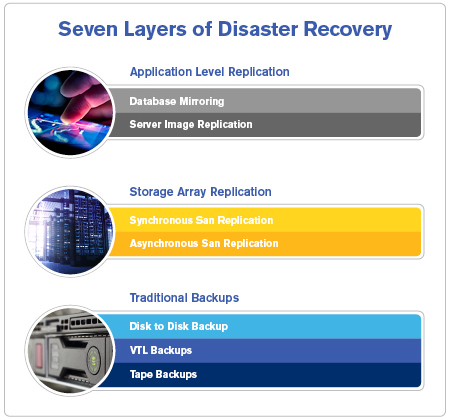
In today’s world of exploding data, traditional backup using tape or even disk-to-disk devices are not useful in an IT disaster recovery event. The restore time could be days to weeks depending on the amount of data for the environment. Also backup jobs in general normally have a small percentage of failures for a number of reasons and this could lead to missing data.
The best practice for a true IT disaster recovery plan is to use application level replication with few moving parts on the restore side. The last thing you want is to perform a lot of complex timed critical operations when performing the switchover to the disaster recovery site.
CREDIT UNION GOES TO MANAGED CLOUD FOR TIGHTER SECURITY AND ZERO DATA FOOTPRINT

I like to look at an IT disaster recovery model like the OSI model for networking. At the bottom of the model layers 1-3 would be traditional backups. The middle layers 4-5 would be storage array replication. This method works well but it normally comes with added steps of storage presentation, drive scanning, VM imports, etc… on the recovery side. At the top, layers 6-7 would be application level replication where server images would be replicated in near real time. Active servers would be running at the IT disaster recovery site for database replication. When you look at IT disaster recovery in this way, the closer you are to the top the better outcome you will have in a true disaster scenario.
To read more about increasing pressures on backup and recovery, read Gartner’s article on “The Broken State of Backup”.

















